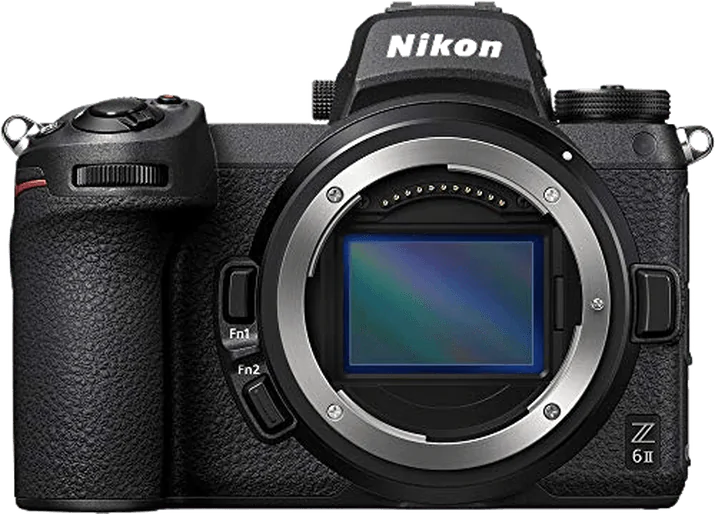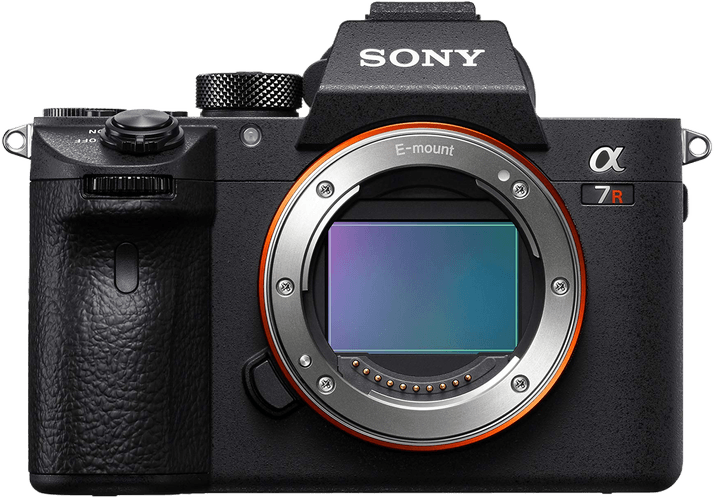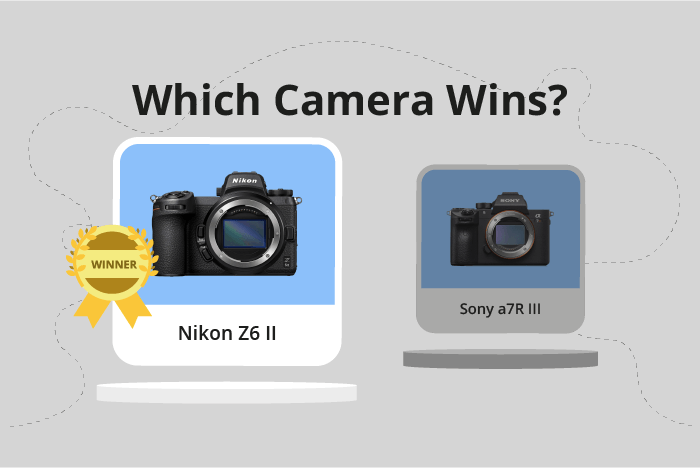Nikon Z6 II vs Sony a7R III Comparison
Nikon Z6 II

Sony a7R III

The Nikon Z6 II and Sony a7R III both receive a score of 83/100, showcasing their high-quality performance as mirrorless cameras. They share common specifications, including being mirrorless and having similar dimensions, with the Nikon Z6 II measuring 134 x 101 x 70mm and the Sony a7R III at 127 x 96 x 74mm.
The Nikon Z6 II, released in 2020, has an advantage in terms of price, costing $1995 compared to the Sony a7R III’s $3200 price tag. However, the Sony a7R III, released in 2017, is slightly lighter at 657g compared to the Nikon Z6 II’s 705g.
Despite their differences in price and weight, both cameras offer impressive performance, making them solid choices for photography enthusiasts. The Nikon Z6 II’s lower price may appeal to budget-conscious buyers, while the Sony a7R III’s lighter weight could be a deciding factor for those prioritizing portability.
Nikon Z6 II vs Sony a7R III Overview and Optics
The Sony a7R III slightly outperforms the Nikon Z6 II in optics, with a score of 84/100 compared to the Nikon’s 83/100. Both cameras share several key specifications, including a CMOS sensor, full-frame sensor size, and image stabilization. They also have their respective lens mounts – Nikon Z for the Z6 II and Sony FE for the a7R III.
The Sony a7R III excels in terms of megapixels and sensor performance. With 42.4 megapixels, it offers a higher resolution than the Nikon Z6 II’s 24.5 megapixels. This difference allows the Sony a7R III to capture more detailed images. Additionally, the Sony a7R III has a DXOMARK sensor score of 100, indicating superior sensor quality compared to the Nikon Z6 II’s score of 94.
On the other hand, the Nikon Z6 II has a faster shooting speed at 14 frames per second, compared to the Sony a7R III’s 10 frames per second. This advantage makes the Nikon Z6 II better suited for capturing fast-moving subjects or action scenes. Furthermore, the Nikon Z6 II features a dual Expeed 6 processor, which provides efficient performance and image processing.
When comparing the optics of these two cameras, the Sony a7R III stands out for its higher resolution and better sensor performance, making it an excellent choice for photographers who prioritize image quality and detail. Meanwhile, the Nikon Z6 II offers a faster shooting speed, which may appeal to those who frequently capture action or fast-moving subjects. Both cameras are strong contenders in their respective areas of strength, and the choice between them ultimately depends on the specific needs and preferences of the photographer.
Nikon Z6 II vs Sony a7R III Video Performance
The Nikon Z6 II outperforms the Sony a7R III in video capabilities with a significant difference in scores, 91/100 and 56/100 respectively. Both cameras have 4K video resolution and maximum video dimensions of 3840 x 2160, but the similarities end there.
The Nikon Z6 II surpasses the Sony a7R III with a higher maximum video frame rate of 120fps, compared to the Sony’s 30fps. This allows for smoother slow-motion footage and more versatility in capturing fast-moving subjects. Additionally, the Nikon Z6 II features built-in time-lapse functionality, further enhancing its video capabilities.
On the other hand, the Sony a7R III’s lower video score does not mean it is without merit. Its 4K video resolution and maximum video dimensions still provide high-quality footage for various purposes. However, its lower frame rate and lack of built-in time-lapse functionality make it less suitable for users who prioritize advanced video features.
Given these differences, the Nikon Z6 II is the clear winner in terms of video capabilities. Its higher frame rate and time-lapse functionality provide a more comprehensive video experience for users. Meanwhile, the Sony a7R III still offers 4K video quality but falls short in advanced features. For users who prioritize video capabilities, the Nikon Z6 II is the superior choice, while the Sony a7R III may be more suitable for those who simply require decent video quality without the need for advanced features.
Nikon Z6 II vs Sony a7R III Features and Benefits
The Nikon Z6 II emerges as the winner in the features comparison, scoring 87/100, while the Sony a7R III scores slightly lower at 83/100. Both cameras share several specifications, such as touchscreen capabilities, the absence of GPS, and the presence of WIFI and Bluetooth connectivity.
The Nikon Z6 II outperforms the Sony a7R III in screen size and resolution, boasting a 3.2-inch screen with a resolution of 2,100,000 dots. The larger screen and higher resolution provide a better user experience and clearer image preview. However, the Z6 II does not have a flip screen, which the a7R III offers with its 3-inch screen and 1,440,000-dot resolution. The flip screen on the Sony a7R III is an advantage for vloggers and photographers who need to shoot at challenging angles.
Despite the Sony a7R III’s flip screen advantage, the Nikon Z6 II’s superior screen size and resolution contribute to its higher feature score. Users who prioritize screen quality will find the Z6 II more suitable for their needs.
On the other hand, the Sony a7R III’s flip screen benefits certain users, making it a better choice for those who require this functionality. This feature does not significantly impact the overall score, but it is an important consideration for some photographers.
Taking these factors into account, the Nikon Z6 II stands out as the better camera in terms of features due to its larger screen and higher resolution. However, the Sony a7R III remains a strong contender for those who need a flip screen, with its other features being comparable to the Z6 II.
Nikon Z6 II vs Sony a7R III Storage and Battery
The Nikon Z6 II outperforms the Sony a7R III in storage and battery with a score of 71/100 compared to 65/100. Both cameras share similarities, such as having two memory card slots and being compatible with UHS-II memory cards. However, there are noteworthy differences.
The Nikon Z6 II accepts SD, CFexpress Type B / XQD cards, providing more flexibility in storage options. Additionally, its EN-EL15c battery supports USB charging, allowing for convenient charging on-the-go.
In contrast, the Sony a7R III only accepts SD / SDHC / SDXC cards, offering fewer storage choices. Its NP-FZ100 battery does not support USB charging. Despite this drawback, the a7R III boasts a longer battery life of 650 shots compared to the Z6 II’s 410 shots.
Considering these factors, the Nikon Z6 II edges out the Sony a7R III in storage flexibility and charging convenience, while the a7R III offers superior battery life.
Nikon Z6 II vs Sony a7R III – Our Verdict
Are you still undecided about which camera is right for you? Have a look at these popular comparisons that feature the Nikon Z6 II or the Sony a7R III:

